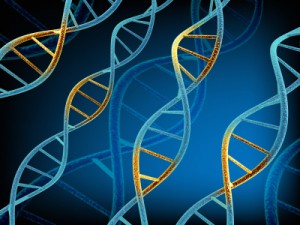Mary Laughlin, MD, first became interested in using stem cells to treat diseases when she was in medical school in the 1980s.
A few decades and countless hours of research and trial work later, that idea is healing hundreds of people at UVA.
And, according to Laughlin, just getting started in terms of the possibilities.
The initial cases at UVA are treating patients with disorders such as leukemia and non-Hodgkin lymphoma, but trials are under way to use stem cells from umbilical cord blood for patients recovering from stroke and those with cardiovascular disease and even diabetes, to name just a few.
Cord Blood Cells
First, the obligatory disclaimer in any discussion about stem cells: The cells used for procedures at UVA are not derived from the controversial embryonic stem cells.
They instead come from the umbilical cords of healthy newborns, and would probably be discarded if not donated for research or medical purposes.
“There are no ethical concerns,” says Laughlin, noting the widespread acceptance of umbilical cord blood for medical research and therapy.
More importantly, the cord cells being used at UVA appear more effective than the alternatives: Adult stem cells and embryonic stem cells.
The problem with embryonic stem cells is that they are more likely to form a tumor, Laughlin says. “That is the major limitation for regulatory agencies like the FDA.”
Even without the thorny ethical issues involving embryonic cells, cord blood cells represent the most effective therapy, according to Laughlin.
Stem cells have the ability to become other cell types in your body, and can be used to produce red bood cells, white blood cells or platelets.
Stem Cell Transplants: Safety
Although it may seem like new therapy, Laughlin takes pains to note the years of research behind the procedures currently being carried out at UVA, pointing out that 24,000 humans have received transplanted cord blood throughout the world at this point.
The reason cord blood therapies now seem to be moving so fast, Laughlin says, is because researchers have identified roughly 600,000 specific cord blood cell lines. This means that a doctor at UVA can use a search engine to match a patient with the lines of cord blood cells available, and usually come up with a suitable match.
The Numbers
When the UVA stem cell transplant program kicked off in early 2012, officials predicted the new group would perform about 15 transplant procedures in the first year.
Instead, the group expects to do about 120 in 2012 and is getting patient referrals from across Virginia.
“This is a unique, differentiating program that serves an unmet need in the Commonwealth of Virginia,” Laughlin says.
One major step on the near-term horizon may be accreditation from the Foundation for the Accreditation of Cellular Therapy, or FACT.
The Stem Cell Patient Experience
When a patient does come to UVA for stem cell therapy, the process is not an easy one.
Stem cell transplants are intensive procedures that can take a serious mental and physical toll on a patient.
Patients can typically count on being in the hospital for four weeks, and must commit to being in Charlottesville for 100 days with a caretaker to assist them.
Still, Laughlin says the patients who have undergone the procedure have become the program’s biggest advocates, as many have almost literally been given new life.
Stem Cells Building the Future at UVA
Laughlin says UVA is now well positioned to be at the forefront of the rapidly emerging world of stem cell therapy.
“My work is one small piece, but there is a robust knowledge base here,” Laughlin says, including in UVA’s labs and its surgery department.
Laughlin says the collaborative nature of UVA makes it well suited to be a leader in the field.
While the focus now is blood diseases, Laughlin says she expects UVA could eventually be among the institutions using stem cells to repair all of the organs of the body, including the brain, heart and pancreas.
“I think the near horizon for cord blood stem cell therapies is brain injury, spinal cord injury, type-1 diabetes and cardiovascular disease,” says Laughlin.
To move forward to such things will call on the combined talents of a lot of specialists.
“I’m just the face. It takes a village,” Laughlin says. “At any one time, our patients are cared for by 30 people. To coordinate all of that is just a pleasure.”
Learn more about the Stem Cell Transplant Program.